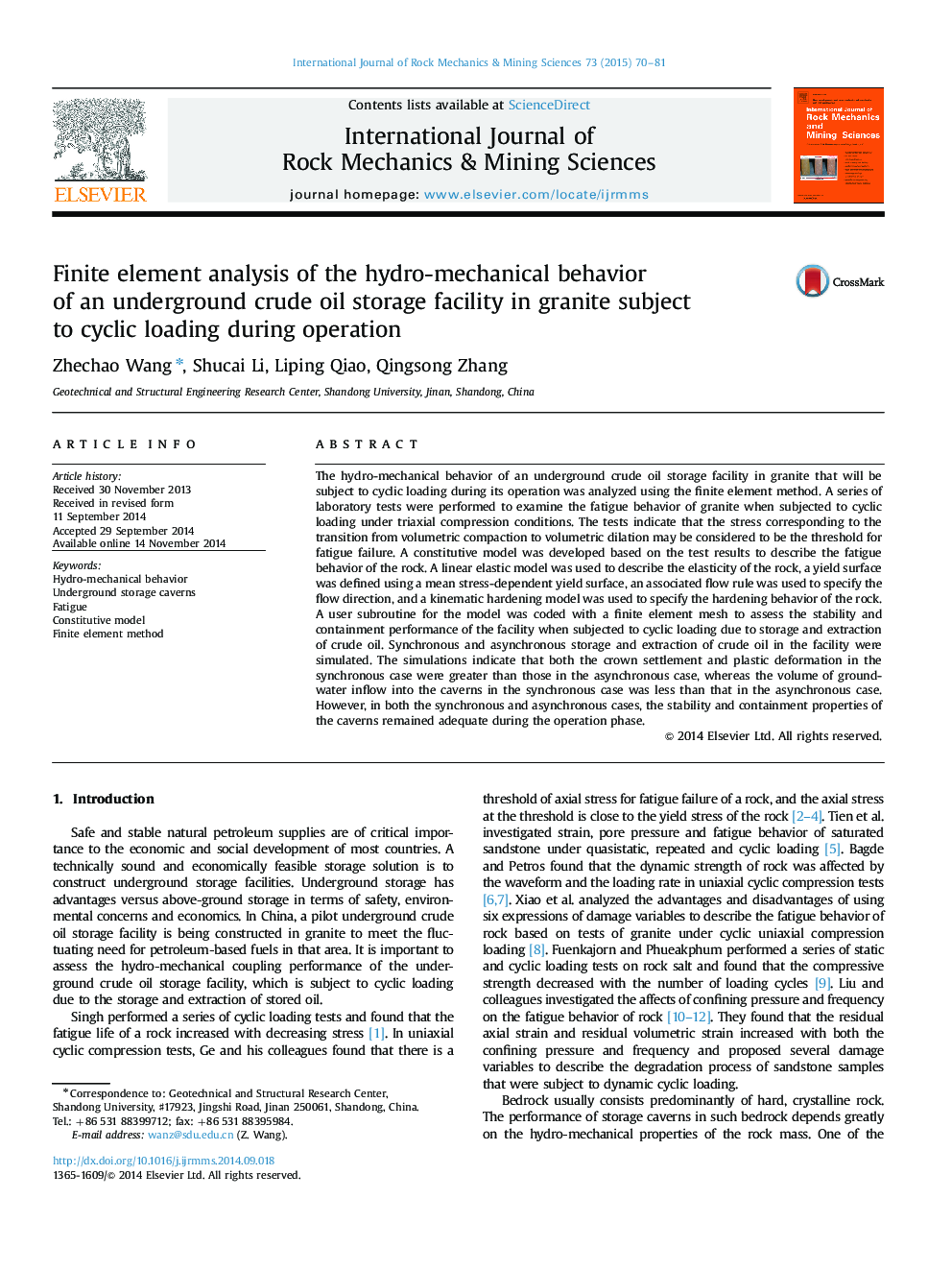| Article ID | Journal | Published Year | Pages | File Type |
|---|---|---|---|---|
| 809063 | International Journal of Rock Mechanics and Mining Sciences | 2015 | 12 Pages |
•Hydro-mechanical behavior of rock mass was analyzed using finite element method.•Characterization of fatigue behavior of granite was performed in laboratory tests.•A fatigue model with mean stress dependent yield surface was developed for rocks.•Influences of synchronous and asynchronous storage and extraction of crude oil were assessed.•The importance of water curtain system for underground storage was addressed.•Stability and containment properties of a pilot underground storage facility were obtained.
The hydro-mechanical behavior of an underground crude oil storage facility in granite that will be subject to cyclic loading during its operation was analyzed using the finite element method. A series of laboratory tests were performed to examine the fatigue behavior of granite when subjected to cyclic loading under triaxial compression conditions. The tests indicate that the stress corresponding to the transition from volumetric compaction to volumetric dilation may be considered to be the threshold for fatigue failure. A constitutive model was developed based on the test results to describe the fatigue behavior of the rock. A linear elastic model was used to describe the elasticity of the rock, a yield surface was defined using a mean stress-dependent yield surface, an associated flow rule was used to specify the flow direction, and a kinematic hardening model was used to specify the hardening behavior of the rock. A user subroutine for the model was coded with a finite element mesh to assess the stability and containment performance of the facility when subjected to cyclic loading due to storage and extraction of crude oil. Synchronous and asynchronous storage and extraction of crude oil in the facility were simulated. The simulations indicate that both the crown settlement and plastic deformation in the synchronous case were greater than those in the asynchronous case, whereas the volume of groundwater inflow into the caverns in the synchronous case was less than that in the asynchronous case. However, in both the synchronous and asynchronous cases, the stability and containment properties of the caverns remained adequate during the operation phase.
